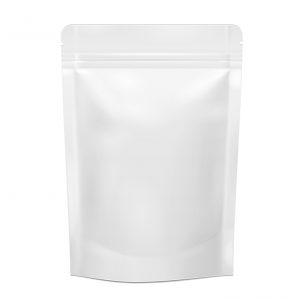 Sometimes the best way to break through the clutter is to sneak past it. In essence, that’s what minimalist food packaging allows you to do. In an industry saturated with eye-catching marketing ploys and bulky boxes, sometimes the most creative food packaging design is the one that keeps it simple. In a trend known as minimalist food packaging, manufacturers are getting back to basics.
Sometimes the best way to break through the clutter is to sneak past it. In essence, that’s what minimalist food packaging allows you to do. In an industry saturated with eye-catching marketing ploys and bulky boxes, sometimes the most creative food packaging design is the one that keeps it simple. In a trend known as minimalist food packaging, manufacturers are getting back to basics.
Marketing is only a surface-deep reason to embrace the minimalist food packaging trend. Below, learn more about how to design food packaging that is simpler and smarter.
Why Companies Are Embracing Minimalist Food Packaging
While companies have any number of reasons to go lean in their packaging, they usually fall into one of three categories — marketing, environmental and monetary.
- Marketing: It’s about selling food products. That makes marketing a primary reason to embrace simple food packaging. Just look at Apple. A sleek, simple design wrapped in an even simpler box helped the brand build a massive global following. The same strategy is applied across virtually every sector — including food manufacturing. A quieter, no-nonsense package communicates a simpler, more appealing food product. To some degree, the next two categories often feed into the larger marketing effort.
- Environmental: Food packaging trends are mirroring those across other industries, regarding going lean and simple. It’s driven, in large part, by a growing consumer demand for products and processes that reduce waste. People buying food products like to know that their buying decisions won’t live on indefinitely in a landfill. Simple food packaging not only helps to reduce waste, but it communicates to the consumer that your company takes environmental impact into consideration.
- Monetary: You have to be nimble to launch a new minimalist food packaging strategy, but the payoff over the long term can make it all worth it. Take the materials, for example. Then there’s the benefit of lighter packaging and lower shipping costs. On a mass scale, that all adds up over time. Reducing waste is as good for your bottom line as it is for the environment — as long as you’re doing it right.
How Are Food Companies Going Minimalist?
Again, the avenues for going minimalist are seemingly endless. However, the more mainstream methods fall into one of a few key categories: materials, use and presentation.
- Materials: Food manufacturers have more options than ever when it comes to packaging materials — recycled paper and cardboard, reusable plastics, recyclable aluminum, and much more.
- Use: Your food packaging doesn’t have to be “one and done.” Manufacturers are getting more creative with how the packaging can be used during and after the food is consumed. That rejuvenates your packaging and feeds into a larger minimalist strategy.
- Presentation: There’s more to minimalism than materials. When it comes to text, less can be better. Make your point on the packaging without covering every square inch with copy and imagery. Smarter use of space helps get your point across in a more memorable way for the target consumer.
What Can PacMoore Do for You?
PacMoore has long been a leader in food manufacturing and packaging. We know how to take your company in practically any direction, including minimalism. We’ve watched this trend evolve over the years and have helped lead the way. From our skilled team of food packaging experts to our cutting-edge resources, learn how PacMoore can help you implement a smart, minimalist food packaging strategy. Contact us today.